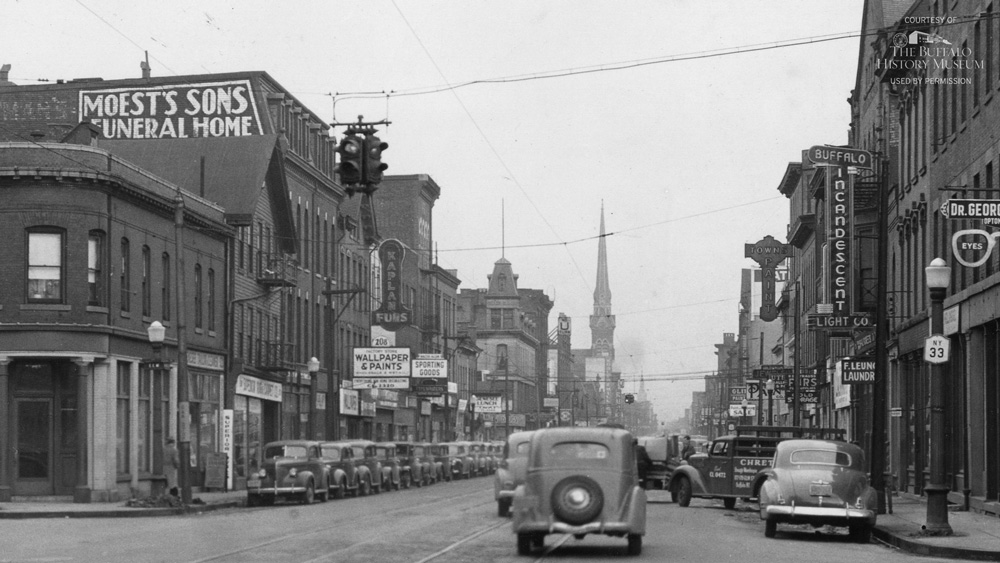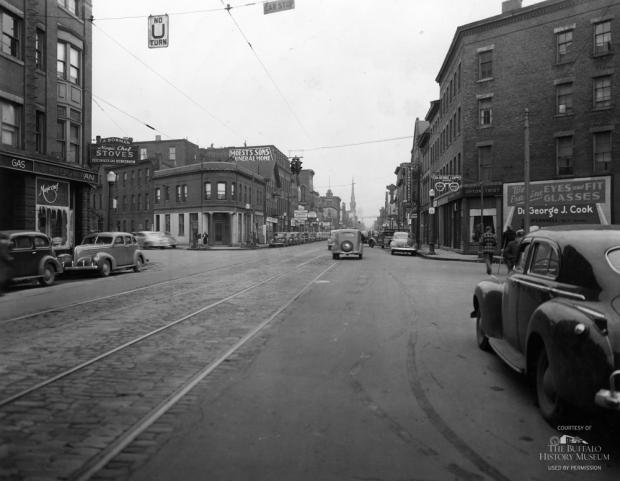Looking Backward: Genesee & Elm, c. 1940
“A wide swath of the Elm-Oak corridor, from Sycamore north to Goodell, has been cleared and leveled. It is brick-strewn, not even good as a ball field or parking lot.” –Buffalo Courier-Express, July 25, 1972
Urban renewal and highway construction altered the face of Buffalo. Entire neighborhood ecosystems were erased, hundreds of buildings leveled, and thousands of residents scattered. Here, in a circa 1940 photograph of Genesee and Elm streets by Hauser Bob, just such an ecosystem is pictured, pre-destruction. Twenty-nine businesses exist along Genesee Street between Elm and Michigan alone. From left to right on the north side of Genesee, signs are visible for T. A. Bowman stoves, Moest’s Sons funeral home, Factory Paint Store, Kaplan Furs, and Genesee Lunch. On the south side, from right to left, signs are visible for optometrist Dr. George J. Cook, Frank Leung’s laundromat, Buffalo Incandescent Light Co., Hyman Strauss fur trimmings, Utech Wallpaper & Paint Co., Morris Goldsman jewelers, and Towns Paint Co.

Twenty-five years later, most of the buildings pictured here would be demolished by the New York State Department of Transportation for a never-built Elm-Oak Expressway. With the expressway plans nearly scuttled, in 1972 Buffalo budget director James W. Burns grumbled not that the neighborhood was demolished for nothing, but that the tax base was eroded. “I wish,” Burns said, “that the state would at least release the land to us for relocation purposes, so we could put mobile homes on it to house people displaced [by urban renewal] from other areas.” Only a few buildings pictured here, spared from clearance, remain standing today.
Image courtesy of The Buffalo History Museum. Used by permission.

